November 15, 2019
I’ve been thinking about loss of memory lately. It is a topic of discussion on many TV shows from dramatic productions to the evening news, so it is difficult to escape. Most every adult has a brain fart every now and then and each occurrence tends to expand with age. One day it’s forgetting to bring lunch money to school, the next its wondering how you got into the kitchen and why you are there. I’ve adopted a different and, I believe, healthier perspective. It’s not that I can’t remember, it’s just that I must not have ever known.
 The Ruger Hawkeye® Hunter, is the rifle I was always waiting for Ruger to produce. The standard Hawkeye in 308 Winchester is a bit too long with its 22″ barrel. The 308 Winchester Compact overcompensated with a 16.5″ barrel, went a bit too light for a 308 Win at 5.7 lbs and shed an inch of length of pull… which I didn’t miss carrying, but I did miss when shooting. So along came the Hawkeye Hunter with dream specs for the woodland hunter.
The Ruger Hawkeye® Hunter, is the rifle I was always waiting for Ruger to produce. The standard Hawkeye in 308 Winchester is a bit too long with its 22″ barrel. The 308 Winchester Compact overcompensated with a 16.5″ barrel, went a bit too light for a 308 Win at 5.7 lbs and shed an inch of length of pull… which I didn’t miss carrying, but I did miss when shooting. So along came the Hawkeye Hunter with dream specs for the woodland hunter.
|
Ruger’s Hawkeye Hunter |
|
| Manufacturer | Sturm Ruger & Co., Inc. |
| Model | 57107 |
| Caliber | 308 Winchester |
| Magazine Capacity | 4 |
| Barrel Length | 20″ (5/8″- 24 Threads) |
| Twist Rate | 1:10″ 5R |
| Weight | 7 lbs 0 oz. |
| Overall Length | 40″ |
| Stock | American Walnut |
| Pull | 13.5″ |
| Drop at comb | 3/4″ |
| Drop at heel | 1″ |
| Non-optical sights | None – Picatinny Rail |
| Trigger | LC6™ Non- Adjustable |
| Trigger Pull | 4 lbs. 14 oz. |
| Safety | Three Position |
| MSRP | $1,099 |
In overview, I found the subject rifle to be particularly nicely done. What does that mean, Joe? The finish on both metal and wood pieces were exceptional. Even the bright stainless, a finish I typically don’t care for, looked good; even texture, clean edges, smooth function.
The stock finish of the subject rifle was uniform, checkered panels were cleanly cut, inletting around floorplate was tight and the barrel channel carried an even narrow gap from receiver to forend. The walnut was darker than typical for Ruger. The recoil pad, while thinner than some, was adequate for the 308 Winchester and it poses no threat of getting hung up on winter clothing. The barrel floated in the barrel channel, no odd pressure points. Sling swivel studs are included.
At 7 lbs, the Ruger Hawkeye Hunter is not a featherweight, but it is a lightweight and well balanced with a 20″ barrel. Subsequently, it tracks well to a moving target and it settles quickly on fixed targets. The 90° lift bolt throw is smooth with reliable feed, extraction and ejection. It is also low effort. The, scalloped, dog leg bolt handle provides adequate clearance for even large eyepiece scopes.
The three position safety is positive an actuation; fire, unlocked bolt safe and lock bolt safe with the unlocked bolt safe available to facilitate loading and unloading. The floorplate is hinged, released with the rifle’s floorplate latch, recessed into the forward face of the trigger guard.
Eliminating a conflict of interest…
The Ruger Hawkeye Hunter is currently available in four chambers, each matched with an appropriate case capacity/bore capacity barrel length: 6.5 Creedmoor 22″ barrel, 308 Winchester 20″ barrel, 30-06 Springfield 22″ barrel, and 300 Winchester Magnum 24″ barrel.
All model numbers are supplied with a 20 MOA Picatinny rail secured with four, #8-40 screws for increased long-range elevation capabilities. Good thought; rails are more accommodating when mounting a scope, the 20 MOA bias is a good way to keep mid range elevation adjustment where shooting is at great distance and the oversize fasteners can withstand the weight of oversize scopes.
For me, I think there is an incongruity between these chambers and barrel lengths and the use of a rail with a 20 MOA elevation bias, particularly in the case of the 308 Win with 20″ barrel. It is a woodland combination, not an 800 yard combination, as the configuration places moderate magnification scopes mounted on even low rings high above the bore centerline and high above the buttstock’s comb. Beyond the vertical tilt, the rail adds 0.300″ to the mount height.
Ruger, in their consumer wisdom, left their proprietary mount system in place. The standard striations have been machined smooth for a flat rail mating surface and the rail fastener holes have been drilled and tapped, but the scalloped ring clamping points remain as do the radiused cross slots.
Removing the rail and Installing Ruger medium height 30mm rings, even with the larger scope tube diameter, the optical centerline moved over 0.250″ closer to bore centerline while still clearing the scope’s 57mm objective bell. The center of the eyepiece moved closer to the comb and the scope provided a brighter larger field of view. Was the change necessary? Only to suit my preferences and to demonstrate the options the Hunter affords.
A woodland hunting handload strategy
The 308 Winchester is not a rocket ship in the world of hunting cartridges, but then rocket ship cartridges are the ones people buy but don’t need because the average whitetail is shot at two and one half feet. Yes, that is sarcasm, but not by much. Yes, that was more sarcasm. So rather than pick a cartridge that hits like a lightning bolt at 800 yards, when you can pick a cartridge that duplicates those 800 yard ballistics at 100 yards to 200 yards at a lower cost, with less muzzle blast and recoil?
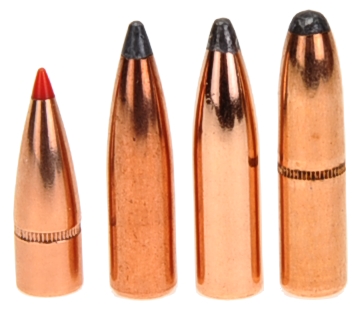 In keeping with the previous observation, four bullets were selected that are on the heavy side for the 308 Winchester with the exception of the first, far left. The 125 grain Hornady is a tough bullet in contradiction to its weight. Harder lead core and a thicker jacket, particularly at the shank, make for rapid expansion with weight retention and Hornady’s recommendation for use on medium size game up to 300 lbs.
In keeping with the previous observation, four bullets were selected that are on the heavy side for the 308 Winchester with the exception of the first, far left. The 125 grain Hornady is a tough bullet in contradiction to its weight. Harder lead core and a thicker jacket, particularly at the shank, make for rapid expansion with weight retention and Hornady’s recommendation for use on medium size game up to 300 lbs.
The rest are heavier weights offering good penetration, along with expansion and capable for anything from deer, hogs, black bear to Maine moose. The Sierra 220 grain round nose was selected over the more recent VLD type designs because it is a shorter bullet and better stabilizes at lower velocity with the rifles 1:10″ twist. All of the bullets are flat base as super duper, needle tip, boat tail bullets were not useful for short range shooting, and the flat base design preserves case capacity.
There was noting notable regarding ammunition assembly. Checking each bullet with a COL gauge, there was no bullet/rifling interference. The first Hornady load with AR Comp powder was the only compressed load and its companion H335 load produced more than a fair share of muzzle flash. All of them fed cleanly and ejected as expected. No case splits, pierced primers or other such signs of concern.
The 125 grain Hornady was the only bullet that received a roll crimp to help boost start pressure, the rest relied on neck tension only. Cases were cleaned, inspected, full length sized, trimmed, and stuffed with standard large rifle primers.
Warning: Bullet selections are specific, and loads are not valid with substitutions of different bullets of the same weight. Variations in bullet length will alter net case capacity, pressure and velocity. Primer selection is specific and primer types are not interchangeable. These are maximum loads in my firearms and may be excessive in others. All loads should be reduced by 5% as a starting point for development where cartridges have greater than 40 grains in capacity and 10% for cartridges with less than 40 grain capacity following safe handloading practices as represented in established mainstream reloading manuals. Presentation of these loads does not constitute a solicitation for their use, nor a recommendation.
| 308 Winchester – SAAMI MAP 62,000 PSI | |
| Firearm | Ruger Hawkeye Hunter |
| Barrel Length | 20.00″ |
| Min – Max Case Length | 2.015″ +0.000″/-0.020″ |
| Min – Max COL | 2.490″ – 2.810″ |
| Primer | CCI 200 (LR) |
| Bullet Diameter | 0.3090″ +0.000″/-0.0030″ |
| Reloading Dies | Redding FL |
| Bullet Type | Bullet Weight Grains |
Net H2O Grains Capacity |
COL” | Powder Type | Powder Charge Grains |
Muzzle Velocity fps |
Muzzle Energy ft/lbs |
100 YD 3 Shot Group” |
| Hornady SST | 125 | 49.8 | 2.750 | AR Comp | 47.0C | 3110 | 2685 | 0.9 |
| Hornady SST | 125 | 49.8 | 2.750 | H335 | 48.5 | 3002 | 2502 | 1.0 |
| Nosler Partition | 180 | 46.5 | 2.770 | Norma 203B | 44.0 | 2552 | 2604 | 1.1 |
| Nosler Partition | 180 | 46.5 | 2.770 | Win 760 | 48.0 | 2594 | 2690 | 0.8 |
| Speer | 200 | 46.9 | 2.800 | Re 15 | 41.5 | 2463 | 2695 | 0.7 |
| Speer | 200 | 46.9 | 2.800 | BLC2 | 44.0 | 2469 | 2708 | 0.9 |
| Sierra | 220 | 44.3 | 2.700 | Re 17 | 44.0 | 2269 | 2516 | 1.2 |
| Sierra | 220 | 44.3 | 2.700 | H414 | 44.0 | 2281 | 2542 | 1.1 |
And what might this look like, exterior ballistics wise?
| Best Zero Results Hornady 125 Grain | |||||||
| Near-Zero – yds. | 27 | Mid Range – yds. | 143 | ||||
| Far-Zero – yds. | 249 | Max Ordinate – in. | +3.0 | ||||
| Point Blank – yds. | 265 | ||||||
| Yards | 0 | 50 | 100 | 150 | 200 | 250 | 300 | |||||
| Velocity – fps | 3110 | 2950 | 2795 | 2646 | 2501 | 2361 | 2226 | |||||
| Energy – ft.-lbs. | 2684 | 2415 | 2169 | 1942 | 1736 | 1547 | 1375 | |||||
| Momentum – lbs-sec | 56 | 53 | 50 | 47 | 45 | 42 | 40 | |||||
| Path – in. | -1.50 | 1.03 | 2.56 | 2.98 | 2.15 | -0.06 | -3.84 | |||||
| Drift – in. | 0.00 | 0.00 | 0.00 | 0.00 | 0.00 | 0.00 | 0.00 | |||||
| Time Of Flight – sec. | 0.00 | 0.05 | 0.10 | 0.16 | 0.22 | 0.28 | 0.34 | |||||
The Hornady 125 SST has a design impact velocity range between 2200 fps – 3000 fps, with as low as 1850 for adequate expansion Medium game 50 – 300 lbs. With a 265 yard point blank range, there would not be many places in our part of the country where range estimating would come into play.
| Best Zero Results Speer 200 grain |
|||||||
| Near-Zero – yds. | 22 | Mid Range – yds. | 119 | ||||
| Far-Zero – yds. | 213 | Max Ordinate – in. | +3.0 | ||||
| Point Blank – yds. | 227 | ||||||
| Yards | 0 | 50 | 100 | 150 | 200 | 250 | 300 | |||||
| Velocity – fps | 2469 | 2392 | 2317 | 2243 | 2170 | 2099 | 2030 | |||||
| Energy – ft.-lbs. | 2707 | 2541 | 2383 | 2234 | 2092 | 1957 | 1829 | |||||
| Momentum – lbs-sec | 71 | 68 | 66 | 64 | 62 | 60 | 58 | |||||
| Path – in. | -1.50 | 1.45 | 2.87 | 2.68 | 0.76 | -3.00 | -8.74 | |||||
| Drift – in. | 0.00 | 0.00 | 0.00 | 0.00 | 0.00 | 0.00 | 0.00 | |||||
| Time Of Flight – sec. | 0.00 | 0.06 | 0.13 | 0.19 | 0.26 | 0.33 | 0.40 | |||||
Where the 125 grain Hornady maintains higher velocity and flat trajectory, the 200 grain gave up 38 yards of point blank range and a bit of velocity, but the heavier bullet holds onto kinetic energy and momentum for a longer distance and provides greater penetration on game.
What can one do with a Ruger Hawkeye Hunter?
The emphasis here was placed on bullets I generally don’t load in an effort to fill in the gaps in accumulated 308 Winchester data. The rifle, outside of this exercise, has much greater potential to fit a wide variety of hunting environments. Factory and handloaded ammunition rated for varmint hunting is common place, as is ammunition intended for deer and elk hunting. Hornady offers a Custom International product that they rate for large game up to 1,500 lbs and dangerous game, the latter illustrated with a cape buffalo. I can’t run as fast as I once could, so I’ll reserve judgement on the cape buffalo, but I can’t think of much else that would have to be excluded.


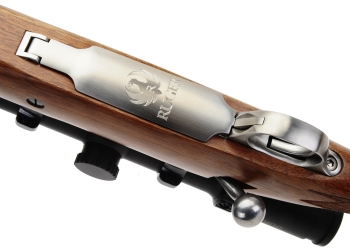

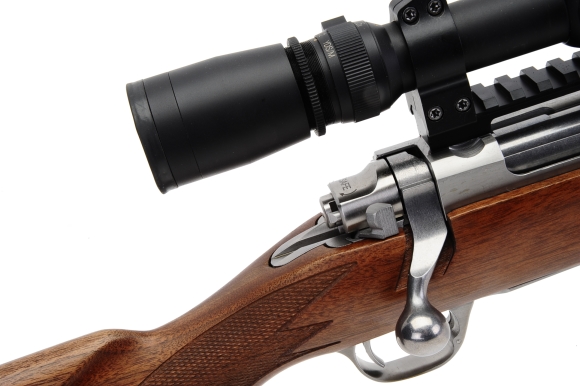

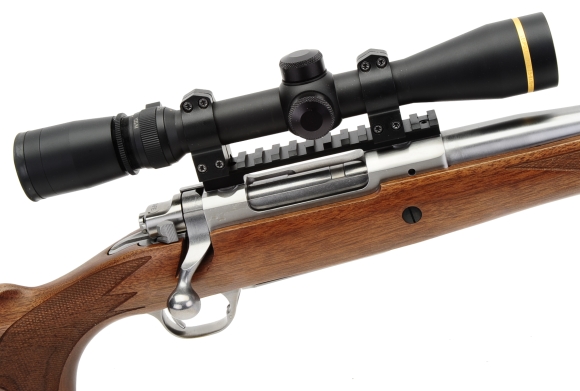
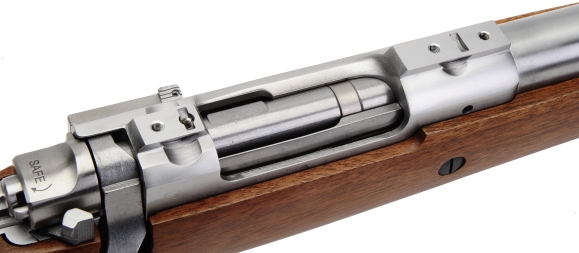
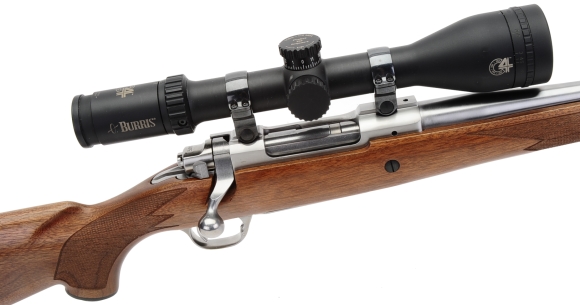
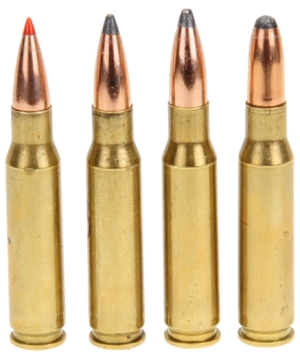
Email Notification